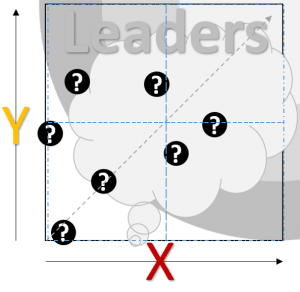
“67 percent of the buyer’s journey is now done digitally. Let’s add to that: Our research shows that online searches are executives’ first course of action (just like everyone else).”
This quote from SiriusDecisions—a leading global B2B research and advisory firm—is telling. It supports the idea that the information required to make informed purchases has never been more ubiquitous than it is today. No longer is information silo’d with vendors where you have to meet with their sales team just to understand what problems they can solve for you.
Since the advent of the internet, and other digital channels, consumers can research information on how to satisfy their needs or solve their problems 24 hours a day, 7 days a week from home, or even in a coffee shop.
If nearly 70% of a consumer’s (B2C and B2B) research can be satisfied digitally (online), what does this mean to you and your business? It means that they could eliminate your company, before they ever call on you. How scary is that?
Have you found digital marketing overwhelming, wondering what all you should be doing? …wondering what matters and why? Here’s some help, a list of digital marketing concepts that make up the core elements of successful digital marketing. Buyer’s Journey, Ideal Customer, Considered Purchases, Lead Nurturing, Content Marketing Does your organization understand these? If not, continue on and educate yourself.
[nextpage title=”Ideal Customer”]
What is an ideal customer?
A critical exercise every business should perform is to identify their ideal customer(s). What is an ideal customer? Your ideal customers are the best customers for your product or service. That seems easy and pedestrian, but don’t miss this important distinction. Not everyone who has a need that your offering can address is your ideal customer.
A common rule of thumb in business is the Pareto Principle. It stats that, for many events, roughly 80% of the effects come from 20% of the causes. If this generalized principle is true, that means 80% of your revenue coming from 20% of your customers, or 80% of your efforts are under-performing.
Why then would you spend time marketing and selling to the 80% that doesn’t help your business? Many businesses aren’t identifying those customers whose needs and behaviors line up with theirs.
How many customers do you have where your margins are thin due to returns, rework or general customer hassle? Could you spend more time on the customers who more ideally suit your offerings and business profile and be more effective? Likely!
[nextpage title=”Considered Purchase”]
What is a considered purchase?
Some purchases decisions are easy and can be transacted with little thought or deliberation. Repeat purchases for example: A product or service solved your need last time and will likely solve it again. Another example is a transaction where the emotional or financial risk is so low that you can buy it with little consideration.
However, sometimes our need is sufficient that we need to educate ourselves before we make the purchase. These purchases fit the definition of a considered purchase—requires meaningful investigation and comparison before we buy.
Honestly, when you went online to buy an item that required a little research, were you looking for sales and marketing content to persuade you to make the purchase, or were you looking for information, to educate yourself?
Consumers, whether B2C or B2B, routinely go online to investigate a need. If they are considering a purchase that doesn’t have low risk or is simply transactional, they go online (or ask friends/colleagues) seeking answers.
Before the internet consumers had to go to the library, ask a friend, read a magazine, or contact a vendor to get more information about the object or service they were investigating (to buy). With the proliferation of digital content channels (websites, ebooks, review sites, social media, podcasts, etc) there is an abundance of information to help them on their journey to buy a considered purchase.
[nextpage title=”Buyer’s Journey”]
What is the buyer’s journey?
Simply this, a research, consideration and decision process that a buyer goes through to purchase a product or service.
[nextpage title=”Content Marketing”]
What is content marketing?
The Content Marketing Institute describes it this way: “Content marketing is a strategic marketing approach focused on creating and distributing valuable, relevant, and consistent content to attract and retain a clearly-defined audience — and, ultimately, to drive profitable customer action.”
What is content marketing to you and your company?
Content marketing is the life-blood of your company’s effort to attract, help, engage and convert your ideal customers and infectious fans. When you author good, useful content that helps people solve their problems you initiate a reciprocal nature within them to want to return the favor.
[nextpage title=”Landing Pages”]
What are landing pages?
A landing page is technically any page a website visitor first lands on—home page, section pages or any other. This has been the historical definition. With the maturity of digital marketing a landing page has a morphed to a more specific definition: a standalone web page distinct from typical website traffic and designed for a singular and focused objective.
This means that your landing page should have no global navigation to tie it to your primary website. The main reason for this is to limit the options available to your visitors, helping to guide them toward your intended conversion goal.
[nextpage title=”Lead Nurturing”]
What is lead nurturing?
Lead Nurturing is a process where you engage potential buyers at stages along their buyer’s journey. It is a focused and sincere effort to meet the information needs of your ideal customers.
[nextpage title=”Permission Marketing”]
What is permission marketing?
Get permission! The End!


 Analyst ratings, scores or placements are useful, but misinterpreted or over emphasized can lead buyers to very bad decisions. For example, the analyst has an ideal customer, that customer is typically the largest enterprises with the most complex needs and largest budgets (have to be able to afford the analyst). Their ratings, scores, and placements of products on their annual reports illustrate this most typically when they assign “Leaders.”
Analyst ratings, scores or placements are useful, but misinterpreted or over emphasized can lead buyers to very bad decisions. For example, the analyst has an ideal customer, that customer is typically the largest enterprises with the most complex needs and largest budgets (have to be able to afford the analyst). Their ratings, scores, and placements of products on their annual reports illustrate this most typically when they assign “Leaders.”